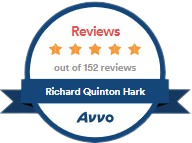This blog shall focus on the new phenomenon of employment assistance (EAP”) programs. Employee/professionals are introduced to these programs in the context of positive drug tests in the work place. The extent of self-disclosure and participation within these programs has become a source of information for licensing board investigators and PHMP programs. Participant disclosure in EAPs of drug use or mental health history could be discovered by board investigators and backfire against the professional.Initially, some employers require the employee/licensee to report to their licensing board the positive drug test result and enrollment in the EAP. This Blog especially applies to you. Board investigators will seek out and secure release of your EAP case worker files, notes, and treatment facility disclosures even if there is no licensure reporting requirement. Do not assume your board will not discover your EAP enrollment.As such, the issue is to what extent must you disclosure to a EAP case worker. What is complete self disclosure? What is complete? Does an employee need to release to the EAP: 1)medical records, 2) psychological or psychiatric treatment records, or 3) provide full self disclosure of prior recreational or adolescent drug use? Disclosure versus signing medical authorizations are two separate things. Never sign medical releases for any, any, any, any prior treatment history.Sometimes, the EAP program is administered at a local treatment? To whom are you the employee/licensee disclosing prior drug use? What are treatment facilities’ legal obligations of disclosure to the state? Some treatment facilities, if they know a EAP participant is a licensed professional, will administer a different treatment program and protocol that are aligned with the PHMP. Here especially, do not sign blanket medical releases. Also, make sure all disclosure, if you make them, are completely confidential with no right of dissemination by the EAP (within the treatment facility) to any one.The professional should not lightly enter a EAP. The professional should not voluntarily disclose or sign releases for medical, psychiatric, or drug use histories in these programs. Again, what is complete and to whom is the licensee disclosing a history? All information given to the EAP will be available to the professional board investigator. Thereafter, PHMP caseworkers will seek to secure statements and information in EAP case worker possession. The PHMP investigator and PNAP caseworker will seek to corroborate facts given to them versus the EAP.Consequently, disclosure in an EAP of historical drug, alcohol, or medical histories not necessary to EAP participation and employment retention may result in further treatment and license requirements. One doesn’t necessarily have to “drink the Kool-Aid” or be “all in” in the EAP program to maintain employment. It is the factual disclosures in the EAP program that PHMP caseworkers will used against the licensee in the future.As my prior blogs state, the licensee must be very careful about the decision to go enter the PHMP. Don’t be scared into the program by the caseworker and the various letters of concern that they send out. Unless one is ready willing and able to admit a drug or alcohol addiction which has rendered you incapable of practicing your profession safely, statements to PHMP, PMP, PNAP, PHARC or any other licensing board drug and alcohol investigator should be severely curtailed.Attempting to save one’s job by going into an EAP as a result of violating drug and alcohol procedures, protocols (of which the employment-based disciplinary rules, procedures, and manuals are ripe with regulations regarding the use of drugs) could end up causing you the professional their license. Call me to discuss.
Employee Assistance Drug Programs — Be Careful What You Disclose
On Behalf of Hark and Hark | Nov 16, 2014 | Firm News |
Categories
- Blog (36)
- Criminal Defense (47)
- Drug Crimes (30)
- Dui (20)
- Federal Crimes (13)
- Firm News (306)
- Injuries (6)
- Medical Nursing (58)
- Pennsylvania Criminal Law (34)
- Philadelphia Criminal Justice Updates (13)
- Professional License Application (37)
- Professional License Issues (183)
- Professional Misconduct (7)
- Substance Abuse (1)
- Uncategorized (2)
- USMLE and ECFMG (3)
Archives
- April 2024 (3)
- March 2024 (2)
- February 2024 (3)
- January 2024 (2)
- December 2023 (3)
- November 2023 (3)
- October 2023 (4)
- September 2023 (1)
- August 2023 (2)
- July 2023 (3)
- June 2023 (3)
- May 2023 (2)
- April 2023 (3)
- March 2023 (3)
- February 2023 (3)
- January 2023 (2)
- December 2022 (4)
- November 2022 (3)
- October 2022 (3)
- September 2022 (2)
- August 2022 (4)
- July 2022 (4)
- June 2022 (5)
- May 2022 (2)
- April 2022 (2)
- March 2022 (3)
- February 2022 (4)
- January 2022 (2)
- December 2021 (3)
- November 2021 (2)
- October 2021 (3)
- September 2021 (2)
- August 2021 (4)
- July 2021 (3)
- June 2021 (3)
- May 2021 (3)
- April 2021 (2)
- March 2021 (3)
- February 2021 (3)
- January 2021 (4)
- December 2020 (4)
- November 2020 (5)
- October 2020 (3)
- September 2020 (8)
- July 2020 (3)
- June 2020 (5)
- May 2020 (2)
- April 2020 (8)
- March 2020 (9)
- February 2020 (7)
- January 2020 (4)
- December 2019 (8)
- November 2019 (5)
- October 2019 (6)
- September 2019 (1)
- August 2019 (3)
- July 2019 (1)
- June 2019 (3)
- May 2019 (5)
- April 2019 (6)
- March 2019 (4)
- February 2019 (5)
- January 2019 (7)
- December 2018 (10)
- November 2018 (8)
- October 2018 (7)
- September 2018 (5)
- August 2018 (6)
- July 2018 (3)
- June 2018 (8)
- May 2018 (5)
- April 2018 (1)
- March 2018 (2)
- February 2018 (2)
- January 2018 (4)
- December 2017 (2)
- November 2017 (5)
- October 2017 (3)
- September 2017 (2)
- August 2017 (4)
- July 2017 (3)
- June 2017 (6)
- May 2017 (2)
- April 2017 (3)
- March 2017 (2)
- February 2017 (1)
- January 2017 (5)
- November 2016 (3)
- October 2016 (5)
- September 2016 (2)
- August 2016 (5)
- July 2016 (1)
- June 2016 (1)
- May 2016 (1)
- April 2016 (2)
- March 2016 (3)
- February 2016 (4)
- January 2016 (2)
- November 2015 (3)
- October 2015 (2)
- September 2015 (3)
- August 2015 (1)
- July 2015 (3)
- June 2015 (3)
- May 2015 (2)
- April 2015 (4)
- March 2015 (3)
- February 2015 (1)
- January 2015 (2)
- December 2014 (1)
- November 2014 (3)
- October 2014 (1)
- September 2014 (2)
- August 2014 (2)
- July 2014 (2)
- June 2014 (5)
- May 2014 (3)
- April 2014 (5)
- March 2014 (2)
- February 2014 (1)
- January 2014 (2)
- December 2013 (3)
- November 2013 (5)
- October 2013 (4)
- September 2013 (2)
- July 2013 (3)
- June 2013 (3)
- May 2013 (5)
- April 2013 (2)
- February 2013 (1)
- January 2013 (1)
- December 2012 (2)
- November 2012 (1)
- October 2012 (7)
- September 2012 (2)
- August 2012 (1)
- July 2012 (1)
- June 2012 (1)
- May 2012 (1)
- April 2012 (1)
- February 2012 (3)
- January 2012 (2)
- September 2011 (1)
- August 2011 (1)
- June 2011 (2)
- May 2011 (1)
- April 2011 (2)
- March 2011 (2)
- February 2011 (1)
- January 2011 (1)
- December 2010 (3)
- November 2010 (2)
- October 2010 (1)
- September 2010 (1)
- August 2010 (3)













